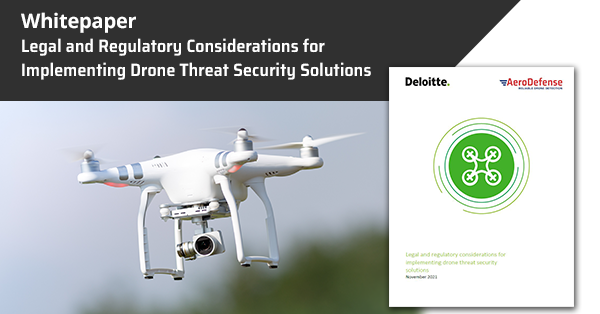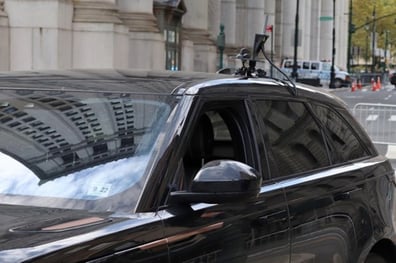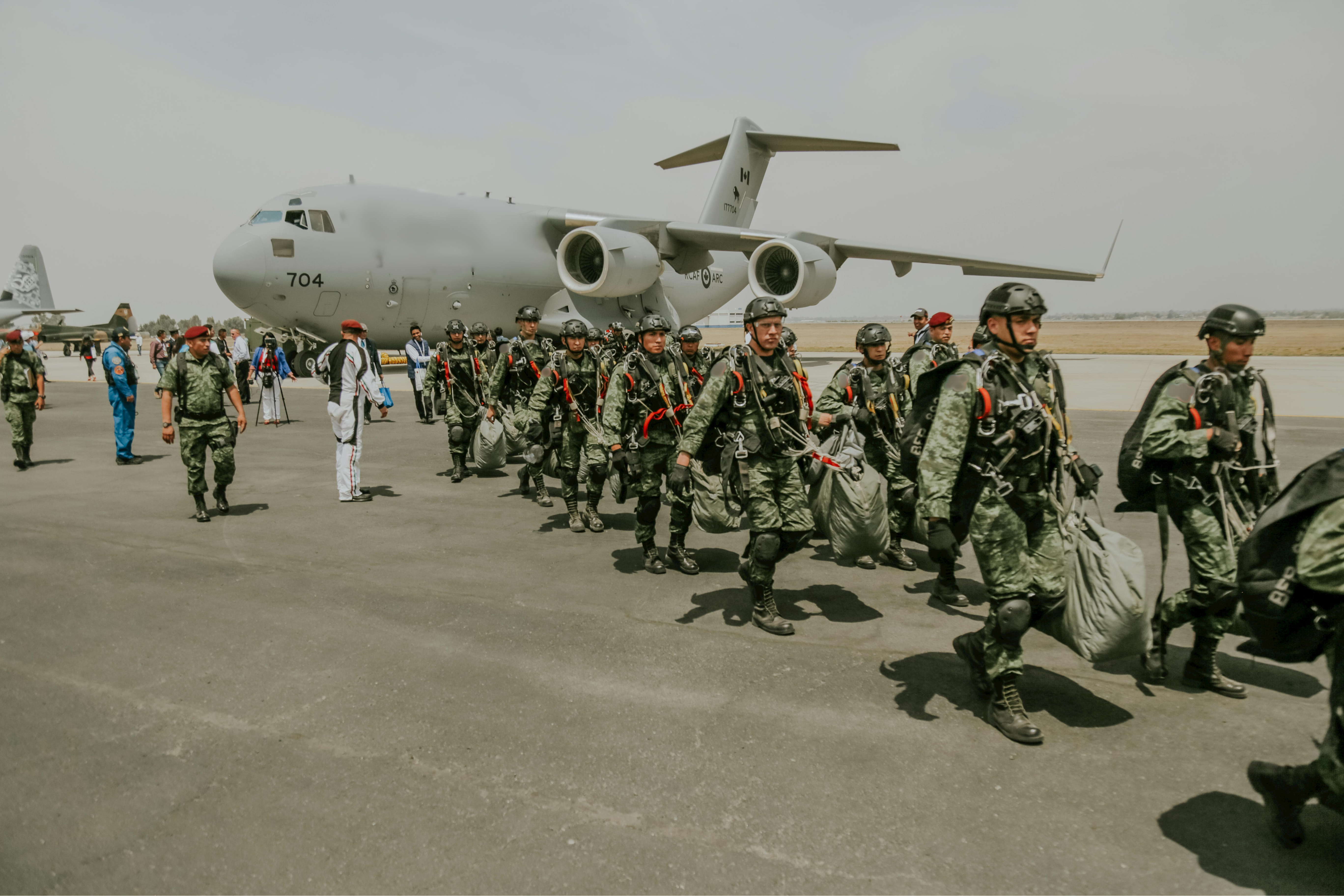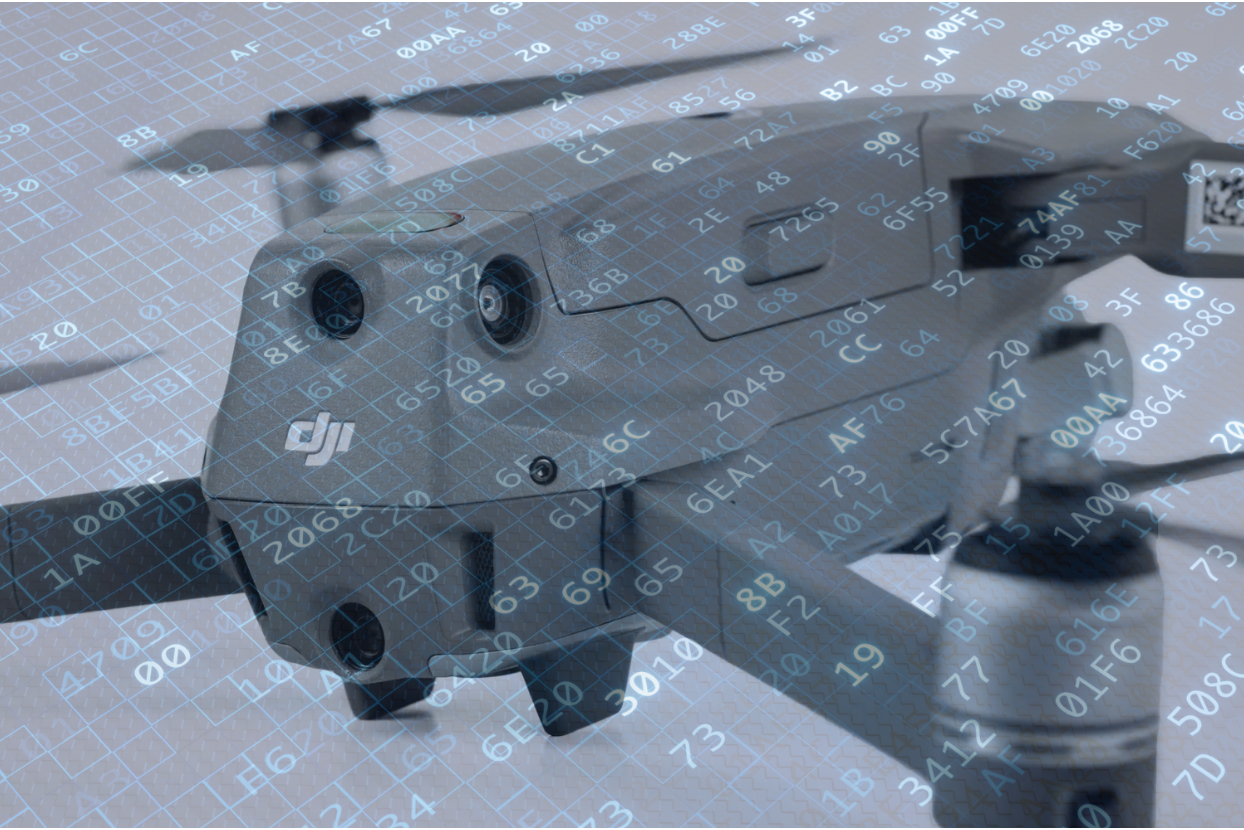Radio Frequency (RF) based drone detection systems emerged as the leading technology for organizations to identify and respond to drone threats because RF is the only type that can detect both drone and pilot. This actionable intelligence is critical for the majority without mitigation authority (ability to take a drone out of the sky) but also has applications for federal agencies granted this authority.
Because RF drone detection is one of the only viable solutions across industries/use cases and many vendors have rushed into the market as a result, misconceptions run amuck. With this blog, we hope to set the record straight and leave any RF drone detection misconceptions behind.
1. Drone detection gear is too bulky and unsightly.
Military-grade detection/mitigation systems are often very large and impractical anywhere outside of the desert. Some commercial systems can be on the bulky side as well but not always. However, Drone detection systems designed to be unobtrusive do exist.
If bulky gear isn’t on your exclusion list, you may want to reconsider. A smart nefarious actor who wants to carry out an attack is probably first going to look for all the security equipment that would stop them and disable or destroy it. Some city planners and building owners will not allow bulky equipment on their buildings because they don’t want their buildings to become targets. Others are concerned about aesthetics so they won’t approve permanent placement.
Furthermore, the ability to mount sensor electronics high enough to achieve the desired line of sight may be limited for bulky equipment. Safety regulations and common sense prevent large bulky equipment subject to wind load issues from being mounted near building edges needed for clear line of sight. Wind load concern increases the higher the equipment is mounted on poles.
2. Reading signal content is the best RF detection/location method.
This might be the easiest method for developers of RF detection systems, and many end users want this information. But there are a few problems here.
-
-
- Reading signal content from the drone’s communication channel without proper authorization violates federal surveillance laws referred to in the Department of Justice (DOJ), the Federal Aviation Administration (FAA), the Department of Homeland Security (DHS), and the Federal Communications Commission (FCC) Issue Advisory on Use of Technology to Detect and Mitigate Unmanned Aircraft Systems.
When the DOJ refers to “content” in Section 605(a) of Title 47, they mean any information inside the drone signal. This information for phone and email communications cannot be captured without legal court authorization per 18 US Code Chapter 206 §3121. For drone detection, only four (4) Federal Agencies are even eligible to apply for 124n authorization required to use a drone detection system that demodulates and decodes all drone signals, not just a particular one covered by a court order.
- Not all drones have an onboard GPS. Without a GPS, systems that read the signal content have no way to locate the drone or controller.
- Drones struggle to establish GPS lock in heavy RF environments like cities and stadiums. RF drone detection systems that rely on reading the drone’s GPS signal to locate will be unable to place the devices unless the drone flies above the RF noise. Now you’ve got a lemon.
- The detection system will require a regularly updated library. If a drone signal is not in the library, then the detection system will not be able to read the signal content. This means the system cannot detect or locate the drone or controller.
- Reading signal content from the drone’s communication channel without proper authorization violates federal surveillance laws referred to in the Department of Justice (DOJ), the Federal Aviation Administration (FAA), the Department of Homeland Security (DHS), and the Federal Communications Commission (FCC) Issue Advisory on Use of Technology to Detect and Mitigate Unmanned Aircraft Systems.
-
3. RF systems generate too many false alarms to be a viable solution.
The areas and sites where drone detection systems are most needed like urban environments, stadiums, airports, and other critical infrastructure do in fact challenge RF systems with competing RF noise. Unavoidable technology like electrical equipment, cell phones, dash cams, etc. emit RF signals.
However, if an RF drone detection system can filter out ambient RF noise and employ other tactics including thorough calibration processes, it will provide reliable drone and pilot location information. It’s important for drone detection technology providers to work closely with their end users to assess the RF environment pre- and post-deployment.
False alarms are inevitable, but they should be minimal so that response personnel aren’t desensitized to system alerts. A low false alarm rate is also important if you are using drone detection technology to assess your threat level. If a system tells you there are 100 drones flown in your area every day or even a month, more likely than not this is a result of the system's ineffectiveness and not a true representation of your threat level. This inflated data could be used against you to sell more product.
4. Systems can provide a serial number or unique identifiers for all drones without reading signal content.
Today, RF detection systems providing a serial number or any other unique identifier of drones and their controllers through reading the signal content violates federal surveillance laws.
In 2022, the FAA’s Remote ID (RID) rule took effect. All drones must publicly transmit the following information:
-
-
- A unique identifier for the drone;
- The drone's latitude, longitude, geometric altitude, and velocity;
- An indication of the latitude, longitude, and geometric altitude of control station (standard) or take-off location (broadcast module);
- A time mark; and
- Emergency status (Standard Remote ID Drone only)
-
Drone detection systems are able to ingest this information and provide it to the end user without breaking any laws. We wrote a blog on the three main reasons RID won’t be 100% reliable though.
-
-
- The pilot can modify these broadcasts to transmit incorrect GPS coordinates of the device.
- If a drone doesn't have a GPS or doesn't have a stable GPS connection, it cannot broadcast its location.
- Someone can easily spoof Remote ID broadcasts confusing the detection app, causing it to think the drone is in a completely different location or that there is a swarm of drones when there aren't any at all.
-
One drone detection sensor that does not read signal content is probably not going to provide the coverage you need. It can be a great tool for airspace awareness at a small site and to help determine if you have a drone problem.
We wrote a whole blog about why a single sensor approach won’t work in an urban environment.
6. I can get authorization to use a system that mitigates or reads signal content.
No private entity, not even a law enforcement agency, can obtain authorization to use a system that mitigates or reads signal content.
Through the Preventing Emerging Threats Act of 2018 (codified at 6 U.S.C. § 124n), DOE, DOD, DOJ and DHS can apply for authorization to use such systems in the United States. However, the process, as explained here, is arduous and once the equipment is placed it cannot be moved without re-application.
7. All RF drone detection relies on a product library of drone manufacturers/models.
Many RF detection systems do rely solely on a product library of drone manufacturers/models. This means that any time a new drone hits the market, someone has to manually add that drone to the library so it will be detected. Given the increasing popularity of drones, you see the challenge here. Also, this library will not include DIY drones that are a popular choice among nefarious actors.
But some RF detection systems don’t need a product library to be effective. For example, our system utilizes spectrum sensing to monitor the RF environment for the presence of drone signals. This means it can detect all drone manufacturers as well as DIY devices without the need for a product library.
8. RF drone detection systems must be mounted in a stationary method.
Fortunately this is untrue as it is one of the key tools to solve urban environment challenges. High-rise buildings create urban canyons that block lines of sight needed by detection tools. Vehicle or marine vessel mounted in-motion sensors that can automatically connect to elevated sensors help to “see” around corners and down the urban canyons by extending the system’s detection range.
 However, many RF drone detection systems do not have mobile drone detection capability. Your use case will determine whether you need this functionality.
However, many RF drone detection systems do not have mobile drone detection capability. Your use case will determine whether you need this functionality.
9. RF drone detection systems can’t locate the pilot.
Some drone detection systems can’t locate the pilot. Without mitigation authority, a system that cannot provide pilot location information does not offer you much. When you know where the pilot is, you can stop the flight and determine their intentions. If you interrupt a nefarious pilot during their pre-operational flights, you just took your site’s name off of their target list and avoided a whole host of safety, financial, operations, and public relations nightmares.
10. RF drone detection systems can’t detect, track, and locate multiple drones and pilots.
This is true for many RF drone detection systems but not all. For example, our system operates with no theoretical maximum number of drone signal detections and has been tested to detect at least fifteen (15) simultaneous drone signals.

